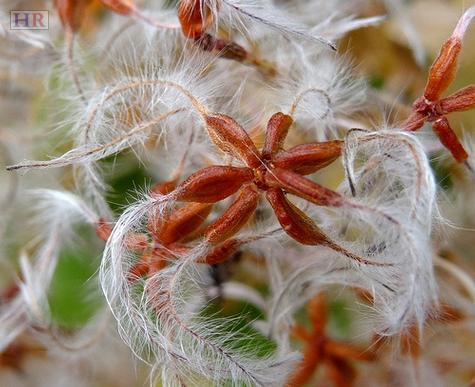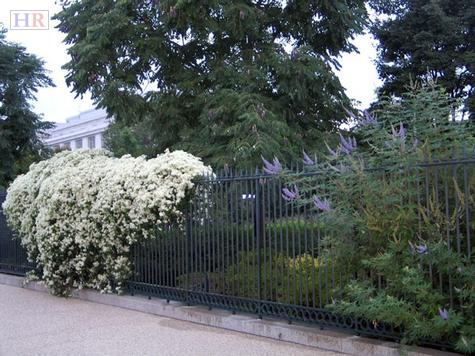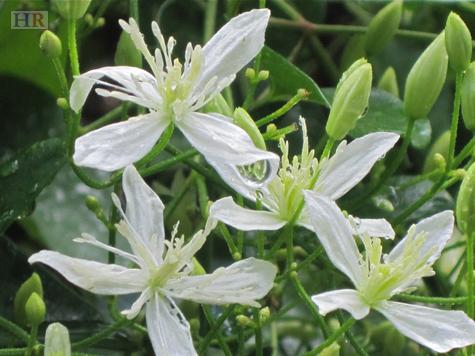Sweet Autumn Clematis Perfumes the Early Fall Garden

(Clematis seedhead)
After two unsuccessful attempts at growing clematis, I became disillusioned and gave up on these lovely vines. A new friend, whose garden featured close to twenty types of clematis scrambling over arbors and winding their way through perennial beds, convinced me to give them another chance. She recommended the two easiest varieties to try: Clematis montana, which blooms in the spring, and Clematis terniflora, which blooms in the fall. I planted one on each side of a small wooden arbor with a bench, backed by a stand of tall lilacs, and have enjoyed their spring and fall displays ever since.
Native to Japan, Sweet Autumn Clematis is a twining deciduous vine, with shiny, deep green, leathery leaves. From late August to October, is is covered with a profusion of dainty, white, star-shaped blossoms with a sweet vanilla scent. The flowers mature into a silvery mass of fluffy, plume-like seedheads, which are almost as showy as the blooms themselves.

Sweet Autumn Clematis is a rapid grower, and can reach a height of 30 feet with a 10-foot spread. It can cover a small trellis or arbor in one season. This makes it an ideal plant for covering an unsightly feature or providing seasonal privacy around a deck or patio. It is also an attractive way to break up an expanse of solid wood fence. To keep the growth in check, you can cut the stems back to 12 inches in the spring. This clematis blooms on the current year’s growth, so no flowers are lost with early season pruning.
Clematis terniflora thrives in Zones 4-9, and unlike many clematis, will bloom well in both full sun and part shade. It prefers a rich soil with good drainage. The crown should be planted 3-4 inches below the soil surface to protect dormant buds from frost damage and injury from cultivation. Clematis prefer a cool root run which can be achieved with a flat stone at the base, with mulch, or with annuals or shallow-rooted perennials planted around them. I feed my Sweet Autumn Clematis in early spring with the same balanced 10-10-10 fertilizer that I use on all my perennials, shrubs and trees.
Although generally trouble-free, all clematis varieties are susceptible to fungi that can cause the vine to suddenly wilt and turn brown or black. These stems should be pruned out and destroyed, and the pruning shears disinfected with a bleach solution. Generally, this disease is not fatal, as dormant buds will send up new growth from the crown. All parts of clematis plants are toxic, so they are not suitable for gardens with young children or pets.

I have found Sweet Autumn Clematis to be an undemanding, attractive addition to my garden, and my clematis collection is growing every year. If you have a large structure to cover, give Sweet Autumn Clematis a try – it is a gorgeous vine for the fall garden.
 (Jana Milbocker is co-owner of Enchanted Gardens, a garden and landscape design firm in Holliston, www.enchantedgardensdesign.com, and a past president of the Holliston Garden Club.)
(Jana Milbocker is co-owner of Enchanted Gardens, a garden and landscape design firm in Holliston, www.enchantedgardensdesign.com, and a past president of the Holliston Garden Club.)